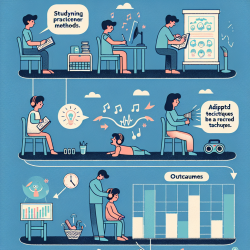As a passionate advocate for creating positive outcomes for children through speech-language pathology, I am always on the lookout for data-driven approaches that can enhance our practices. Recently, I came across an illuminating research article titled A university’s response to people with disabilities in Worcester, Western Cape, which provides valuable insights into community engagement and clinical training. This article highlights how participatory action research (PAR) can lead to more responsive and effective therapy services.
The study, conducted by Stellenbosch University, delves into how the university engaged with the Worcester community to identify and address the needs of people with disabilities. Here are some key takeaways that practitioners can implement to improve their skills and service delivery:
1. Embrace Participatory Action Research (PAR)
PAR involves the community in the research process, ensuring that the needs identified are relevant and accurately addressed. By adopting this approach, therapists can ensure that their interventions are not only effective but also culturally and contextually appropriate.
2. Foster Community Engagement
The study emphasizes the importance of reciprocal relationships between universities and communities. By engaging with the community, therapists can gain a deeper understanding of the unique challenges faced by children with disabilities and tailor their interventions accordingly.
3. Integrate Inter-Professional Education (IPE)
The research highlights the benefits of inter-professional education, where students from different health disciplines collaborate to address community needs. This approach can be adapted to online therapy by encouraging collaboration between speech-language pathologists, occupational therapists, and other professionals to provide comprehensive care for children.
4. Conduct Needs Assessments
Regular needs assessments can help therapists stay updated on the evolving needs of the community. This proactive approach ensures that therapy services remain relevant and effective, ultimately leading to better outcomes for children.
5. Implement Continuous Capacity Building
The study underscores the importance of continuous capacity building through accredited workshops and training sessions. By staying updated on the latest research and best practices, therapists can enhance their skills and provide high-quality care to children with disabilities.
6. Prioritize Mobility, Access, and Transport
Addressing issues related to mobility, access, and transport is crucial for the sustainability of therapy projects. Ensuring that children have access to the necessary resources and support can significantly improve their therapy outcomes.
By integrating these strategies into their practice, therapists can create a more inclusive and responsive therapy environment for children. This research serves as a powerful reminder of the importance of community engagement and continuous learning in delivering effective therapy services.
To read the original research paper, please follow this link: A university’s response to people with disabilities in Worcester, Western Cape.










